Copyright 2012 neutronsources.org | All rights reserved. | Powered by FRM II | Imprint / Privacy Policy
Neutron scattering tables

Bilbao Crystallographic Server
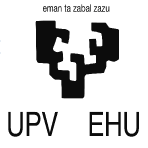
Bilbao Crystallographic Server is the crystallographic site at the Condensed Matter Physics Dept. of the University of the Basque Country.

Chart of the Nuclides

Click on a nucleus for information

Coherent Neutron Scattering Lengths (Atominstitut der Österreichischen Universitäten)
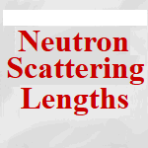
This page contains tables of bound coherent neutron scattering lengths. The tables can be downloaded in portable document format (pdf). The first column of the tables, Z-Symb-A, gives the nuclides´ charge number Z, the element symbol and the mass number A. The column %orT1/2 contains either natural abundance or half live, column I the nuclear spin. The scattering lengths columns are denoted by bc for the bound coherent scattering lengths, b+ for spin-dependent scattering lengths for I + ½, and b- for spin-dependent scattering lengths for I – ½, all in fm. Abbreviations for experimental methods (column Meth) are BD for Bragg diffraction, CF for Christiansen filter, DD for Dynamical diffraction, GR for Gravity Reflection, IN for Neutron Interferometry, M for Many methods, NP for Nuclear orientation, PR for Prism reflection, TM for Transmission, and TR for Total refraction. Download full references for the abbreviations in column Ref.

Computer Index of Neutron Data

CINDA contains bibliographic references to measurements, calculations, reviews, and evaluations of neutron cross-sections and other microscopic neutron data; it also includes index references to computer libraries of numerical neutron data available from four regional neutron data centers.

EXFOR Experimental Nuclear Reaction Data Library (CSISRS)
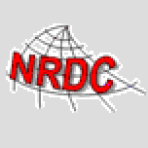
The EXFOR library contains an extensive compilation of experimental nuclear reaction data. Neutron reactions have been compiled systematically since the discovery of the neutron, while charged particle and photon reactions have been covered less extensively.
The library contains data from 19651 experiments.

Inorganic Crystal Structure Database (demo)

This is the ILL’s PHP-MySQL Inorganic Crystal Structure Database (ICSD-for-WWW). Unlicensed users only have access to a demonstration version, with a 3592 structure subset of the 140,116 inorganic structures in release 2011-1. To get started, just enter eg Y Ba2 Cu3 O in the elements box and click Search. (Click on the titles of the input boxes for help). If you are unfamiliar with ICSD-for-WWW, you may want to first look at some Pretty pictures of typical structures and a WWW Flash movie of all the things you can do (in an earlier version of ICSD).

International Union of Crystallography
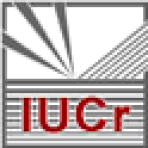
The IUCr is an International Scientific Union. Its objectives are to promote international cooperation in crystallography and to contribute to all aspects of crystallography, to promote international publication of crystallographic research, to facilitate standardization of methods, units, nomenclatures and symbols, and to form a focus for the relations of crystallography to other sciences.

The Isotopes Project, Lawrence Berkeley Laboratory
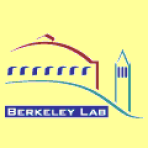
The Isotopes Project compiles, evaluates, and disseminates nuclear structure, radioactive decay, and neutron capture gamma-ray data for basic and applied research. The Project evaluates isotopic data for publication in Nuclear Data Sheets (Academic Press). The group also leads evaluation efforts on prompt and delayed neutron activation data for the International Atomic Energy Agency (IAEA), Nuclear Data Section, performs neutron cross section measurements at the Institute of Isotope and Surface Chemistry (Budapest), and collaborates with the Lawrence Livermore National Laboratory in the evaluation of neutron capture data gamma-ray data for the Evaluated Nuclear Data File.

Neutron Activation Table of Elements

The Neutron Activation Table of Elements allows you to calculate the activation of a sample after it has been in a neutron beam for one day and the amount of time for it to decay to 2nCi/g or less, which is the limit for shipping a sample as “nonradioactive”. It also displays the anticipated exposure you may receive when removing the sample from the instrument.

Neutron Scattering Lengths (NIST Center for Neutron Research)

Select the element, and you will get a list of scattering lengths and cross sections. All of this data was taken from the Special Feature section of neutron scattering lengths and cross sections of the elements and their isotopes in Neutron News, Vol. 3, No. 3, 1992, pp. 29-37.
The scattering lengths and cross sections only go through element number 96 Cm (Curium)
A long table with the complete list of elements and isotopes is also available.

Periodic Table of the Elements

The periodic table is a table of the chemical elements in which the elements are arranged by order of atomic number in such a way that the periodic properties (chemical periodicity) of the elements are made clear. The standard form of the table includes periods (usually horizontal in the periodic table) and groups (usually vertical). Elements in groups have some similar properties to each other. There is no one single or best structure for the periodic table but by whatever consensus there is, the form used here is very useful. The periodic table is a masterpiece of organised chemical information. The evolution of chemistry’s periodic table into the current form is an astonishing achievement with major contributions from many famous chemists and other eminent scientists.

Strategies in Structure Determination from Powder Data
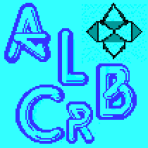
The content of this hypertext tutorial follows a definite scenario. It is the story of an unprivileged researcher in solid state “physico-crystallo-chemistry” : this poor guy has not easy access to a neutron nuclear reactor nor to a synchrotron. However, he does his best in a “modern” laboratory (as far as the financial suupport is maintained), equipped at least with an automatized conventional X-ray powder diffractometer, with specialized databanks and with unlimited means for calculations (a PC with a Pentium processor is sufficient those days !). We will make the hypothesis that this researcher has just done an original synthesis by any method, or that his job is the characterization of a compound a priori unknown. This scenario will serve as the basis for examination of a large part of the capacities offered by powder diffraction in materials science.